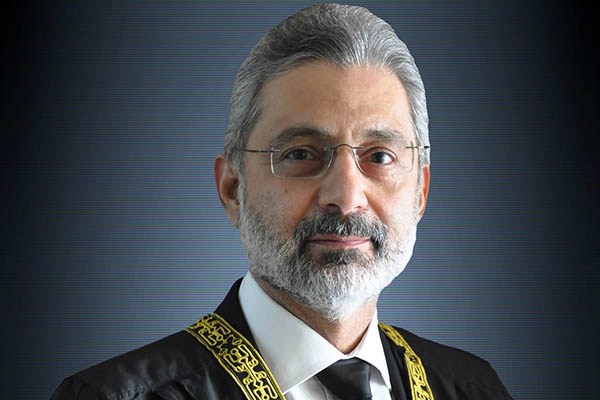
Supreme Court of Pakistan
Supreme Court of Pakistan Justice Qazi Faez Isa, in an address to the Asma Jahangir Conference in Lahore last week, delivered his latest purple patch, saying those who give a bad name to their institutions should be condemned personally without sullying the name of the institutions they serve. On the face of it, the outspoken judge is right. However, if these same institutions are helpless to implement “corrections” within themselves, the general public can hardly be blamed for finding them at fault, albeit perhaps unfairly. Justice Isa’s appeal is honorable, seeking to highlight erring office-holders before they give a bad name to their institution, maintaining—in a likely reference to himself—that “men must be fearless and act on their conscience.”
However, his plea comes against the backdrop of uneasiness about the very institution he serves. One can’t forget Iftikhar Chaudhry, the 20th Chief Justice of Pakistan who served three non-consecutive terms from June 2005 to December 2013. Justice Isa will remember what happened, and the role played by the lawyers’ community in Chaudhry’s return after he was laid aside. In March 2007, then-president Pervez Musharraf had asked Chaudhry to resign and suspended him from office after he refused. His return to the bench was a result of street agitation organized by opposition parties and violent lawyers, whose sharply divisive rhetoric Chaudhry embraced and surpassed in his own judgments, each more passionate than the last. The non-intellectual Chaudhry does not rank among Pakistan’s greatest jurists today; but he was likely among the most controversial men to ever lead the Supreme Court.
During the last four years of his lengthy tenure, the grandstanding Chaudhry effected and exploited political polarization in the country to burnish his populist credentials. He even sought to delay his superannuation through some “well-meaning” lawyers, who filed at least two petitions claiming his indispensability. His rise and fall was further buttressed by the jockeying for power between Pakistan’s major political forces.
The Pakistan Muslim League (Nawaz), under the leadership of Nawaz Sharif, had supported Chaudhry’s triumphal reinstatement in 2009 after ending a coalition with then-ruling Pakistan Peoples Party over its desire to avoid it. Following his return to the bench, Chaudhry served as judge, jury, and executioner rolled into one. Wont to issuing Islamic and anticorruption bromides and playing to the press gallery, he was a wrecking ball who meticulously demolished all perceived enemies—the law be damned. It must be recalled that the same Chaudhry that the PMLN supported was also among the judges who had validated and legitimized the 1999 coup against Sharif, swearing an oath of personal allegiance to coup-maker Musharraf in 2000. Five years later, he was rewarded with the top judgeship. These points must be highlighted to validate Justice Isa’s point.
The Chaudhry court’s activism, unfortunately, was not unprecedented for the South Asian region. His judicial overdrive emulated the foregoing India and Bangladesh models, where activist Supreme Courts had also clashed with the executive and legislative branches. The key difference, however, was that those courts had not sought primacy over other branches of government, but had rather set out to compensate for the poor-quality of governance that characterizes most developing states. This, too, had been Chaudhry’s stated goal during the last tumultuous years of his judgeship, though the results were anything but. The fact remains that men tend to foul up the institutions that should not be maligned, and the public has little option but to blame the institutions for failing at self-correction.
